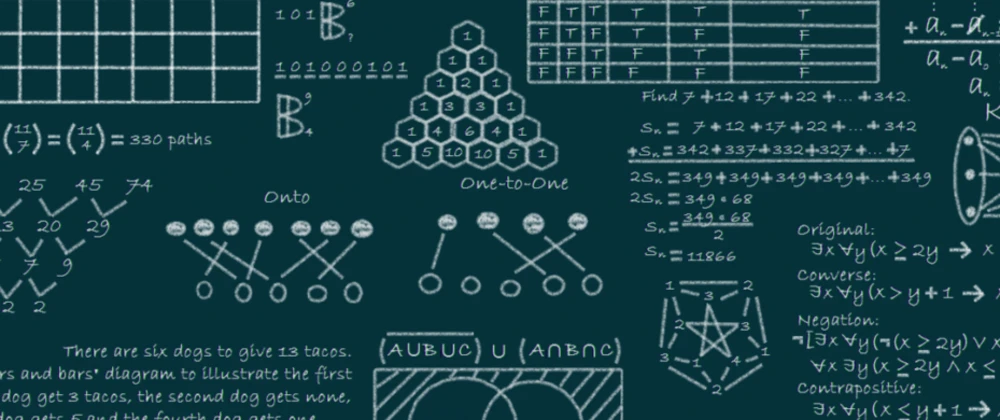[Data Structures & Algorithms] Basic Concepts

Basic Concepts
Concepts: Algorithm
- Algorithm 정의
- Algorithm is a step-by-step procedure for solving a problem in a finite amount of time. It consists of :
- instructions
- input data
- output data
- Algorithm is a step-by-step procedure for solving a problem in a finite amount of time. It consists of :
- Algorithm 표현
- Programming language (C, Java, Python…)
- Pseudo Code
- High-level Description
- Hides algorithm implementations
Example: GCD Algorithm
- Problem: Compute Greatest Common Divisor
- Input: integer L, S
- Output: GCD of (L, S)
- Method: Euclid Algorithm

- Test: GCD(36, 24)=?, GCD(1989, 1590)=?, GCD(84687624, 38742620)=?
Examples: Searching Algorithm
- Problem:Find value X among randomly stored values.
- Input: n integers in array A[0..n-1]
- Output: Value X in A[0..n-1]
- Method: Linear Search

Examples: Find Max Algorithm
- Problem:Find the maximum value
- Input: n integers in array A[0..n-1]
- Output: Maximum value of A[0..n-1]
- Method: Naïve Algorithm

Example: Sorting Algorithm
- Problem: Sorting integers
- Input: n unsorted integers in array A[0..n-1]
- Output: n sorted integers in array A[0..n-1]
- Method: Selection Sort

Concepts: Data Structures
- Data Structure
- How do we store (input/output) data in computer?
- We need to organize data in memory efficiently.
- 예: Matrix를 memory에 어떻게 저장?
- 예: Road map을 memory에 어떻게 저장?
- Every algorithm uses some collections of data structures.
- Two typical types
- Linear types: Stored in linear order
- 예: Array, Linked Lists, Stacks, Queues
- Non-Linear Types: Stored in non-linear order
- 예: Trees, Graphs
- Linear types: Stored in linear order

What is Performance Analysis?
- Performance Analysis
- Space Complexity 분석
- the amount of memory space used by the algorithm
- Time Complexity 분석
- the amount of computer time used by the algorithm
- Space Complexity 분석
- Typically, the more (less) space, the less (more) time.
- Thus, sometimes we need to trade off space vs. time.
Space complexity
- Find a total sum of n numbers; Space = ?

- Addition of two n x n matrices; Space = ?
- Road map connecting n cities; Space = ?
Time Complexity
int sum = 0;
for (i = 1; i <= 1000000; i++) do
sum = sum + i ;
return sum
- What is time complexity?
- Theoretical Speed: $10^6$ additions
- Practical Speed: 10 milli-sec
- Which criteria is more reasonable?
- “Theoretical” speed gives better criteria. Why?
- Time Complexity Criteria
- Theoretical Speed
- the number of operations by performed by algorithm.
- Examples of operations: Arithmetic(+, -, ..), Compare, Swap, Visit, . etc.,
- Practical Speed
- the execution time performed by algorithm. (by using computer)
- Theoretical Speed
- Why “theoretical” speed is reasonable?
- Free of implementation(coding)
- Independent of H/W (computer performances)
- Independent of S/W (programming languages, compilers, . .)
- Provide constant values regardless of environments
- The running time of an algorithm typically grows with the input size n.
- Algorithm의 time 분석 결과는 input size(n)에 대한 식 (예: f(n), g(n) . . 등)으로 표현 됨.
- 다음은 time 분석에서 발생하는 전형적인 패턴들
- Linear Loops
- Logarithmic Loops
- Square Loops
- Cubic Loops
- Logarithmic Linear Loops
Linear Loops
-
Time is proportional to n.
- f(n) = n
for (i = 1; i <= n; i++)
{
// application code
}
- f(n) = n/2
for (i = 1; i <= n; i += 2)
{
// application code
}
Logarithmic Loops
- Multiply
for (i = 1; i <= n; i *= 2)
{
// application code
}
$2^{k-1}$ <= n k = f(n) = $log_2n + 1$ ≈ $log_2n$
- Divide
for (i = n; i >= 1; i /= 2)
{
// application code
}
$n/2^{k-1}$ >= 1 k = f(n) = $log_2n + 1 ≈ log_2n$
Nested Loops
- Square
for (i = 1; i <= n; i++)
for (j = 1; j <= n; j++)
{
// application code
}
f(n) = $n^2$
- Cubic
for (i = 1; i <= n; i++)
for (j = 1; j <= n; j++)
for (k = 1; k <= n; k++)
{
// application code
}
f(n) = $n^3$
- Dependent Square
for (i = 1; i <= n; i++)
for (j = 1; j <= i; j++)
{
// application code
}
f(n) = n(n+1)/2
- Logarithmic Linear
for (i = 1; i <= n; i++)
for (j = 1; j <= n; j *= 2)
{
// application code
}
f(n) = $nlog_2n$
Worst Case/Average Case
- Average Case
- Input data의 여러 형태를 모두 고려
- Expected (average) 실행 시간 값을 제공
- 일반적으로 확률이 요구되므로 계산하기 복잡함
- Worst Case
- Input data의 형태가 최악인 것을 고려
- Upper bound (longest time) 실행 시간 값을 제공
- 최악인 input data만 고려하므로 계산하기 간단함
- Worst case에 더 나은 성능을 갖는 알고리즘의 개발은 중요함
- 예: air traffic, weapon system
- (언급이 없는 한) worst case 분석에 비중을 둠
- 다음 문제의 Worst와 Average case를 각각 분석하라
- Random 상태의 n 개의 input data에서 X를 찾는 문제
- n 개의 input data는 list라는 이름의 array에 저장되었다고 가정.
- Linear Search 알고리즘을 이용
- 비교(comparison) 연산이 몇 번 수행되는지를 count함
- Average Case : A(n)
- q : X가 list에 있을 확률
- T(i) : X가 list의 i 번째 위치에 있을 때 비교 회수
- X가 list에 있는 경우와 없는 경우를 고려
- A(n) = (q/n) · (1 + 2 + . . . + n) + (1 – q) · n = (q/2) · (n + 1) + (1 - q) · n
- 예: q = 1; ?, q = 1/2; ?, q = 0; ?
- Worst Case : W(n)
- X가 list의 맨 끝에 있거나 혹은 없는 경우
- W(n) = n
Comparing Time Complexities
- 주어진 문제에 대해 이를 해결하는 algorithm들은 여러 개가 존재.
- 이러한 알고리즘들의 time 성능을 서로 비교하여 더 빠른 것을 식별하는 것이 매우 중요
- 여기서 time 성능 비교의 criteria는 무엇인가?

problem
- Question: Which algorithm is faster?
- 1) When n is small(say, n < 100), ??
- 2) When n is large (say, n > 100), ??
Big-Oh (O) 의 정의
- Given functions f(n) and g(n), we say that f(n) = O(g(n)).
if there are positive constants c and $n_0$ such that
f(n) ≤ c·g(n) for all n ≥ $n_0$

- c는 H/W 혹은 S/W 환경 변화에 따른 값이며, c의 값이 바뀌어도 growth rate에는 영향을 미치지 않음.
- n의 값이 임계 값 n0 이상이 되면 (즉 input size가 계속 커질수록) g(n)이 항상 f(n) 보다 크다.
연습 : Big Oh(O) Notation
If we want show f(n) is O(g(n)); we only need to find one pair (c, $n_0$).
- 예 1: 100n = O($n^2$)
- We need c and $n_0$ such that 100n ≤ c·n2
- Pick c = 1 and n0 = 100
- 예 2: 7n – 2 = O(n)
- We need c and $n_0$ such that 7n – 2 ≤ c·n for n ≥ $n_0$
- Pick c = 7 and $n_0$ = 1
- 예 3: $3n^3 + 20n^2 + 5 = O(n^3)$
- We need c and $n_0$ such that $3n^3 + 20n^2 + 5 ≤ c·n^3 for n ≥ n_0$
- Pick c = 4 and $n_0$ = 21
- 예 4: $3n^2 = O(100n)$ 은 성립 안 함.
- $3n^3 ≤ c·100n for n ≥ n_0$ 을 만족하는 c 와 $n_0$ 값이 존재하지 않음.
Big Oh and Growth Rate
- “Big Oh” notation gives an upper bound on the growth rate of a function f(n) for large n.
- “f(n) = O(g(n))” means that growth rate of f(n) is no more than the growth rate of g(n).

Big Oh Rules
-
If $f(n) = a_kn^k + … + a_1n + a_0$, (k > 0), then $f(n) = O(n^k)$
- Big Oh Rules
- (1) Drop lower order terms
- (2) Drop constant factors
- If n is sufficiently large, the only importance is the order of complexity;
- For example, $2n^3 + 100n^2 + 4n + 5 = O(n^3)$
-
Use the smallest possible class of functions; For example, “2n is O(n)” instead of “2n is O($n^2$)”
- 1, 3, 100, . . . . ➔ O(1)
- $0.5n, log_2n + n, 10000n, \dots$ ➔ O(n)
- $n^2, 0.5n^2, 10n^2 + 5n + 20, 100n^2, \dots$ ➔ O($n^2$)
- $2log_2n, log_2n + 10, \dots$ ➔ O($log_2n$)
- $4nlog_2n, nlog_2n + 5log_2n + 10, \dots$ ➔ O($nlog_2n$)
- $100n^3, 4n^3 + 50n^2 + 7n + 5, \dots$ ➔ O($n^3$)
Time Analysis: Prefix-Average

- Time: $n + n + (1 + 2 + . . n-1) + (1 + 2 + . . n-1) +n + 1 = n^2 + 2n + 1 = O(n^2)$

- Time: $1 + n + n + n + 1 = 3n + 2 = O(n)$
- Algorithm 1: O($n^2$); (Redundant computations)
- Algorithm 2: O(n); (Saving intermediate results)
Exercise: Searching
-
Problem : Find an integer X among n integers.
- Algorithm 1 :
- Data Structure : Unsorted n integers in array list.
- Method : Linear Search
- Algorithm 2:
- Data Structure : Sorted n integers in array list.
- Method : Binary Search
- Which algorithm is better?
- Searching Cost?
- Insertion Cost?
- Deletion Cost?
Binary Search
- left, right는 각각 list의 왼쪽, 오른쪽 위치를 가리키는 변수임

- 위 알고리즘의 Time 분석을 하라. (Hint: T(1) = 1, T(n) = T(n/2) + 1)
Class of Time Complexities
- Polynomial Time (Tractable)
- O(1) : Constant
- O($log_2n$) : Logarithmic
- O(n) : Linear
- O($n·log_2n$): Logarithmic Linear
- O($n^2$) : Square
- O($n^3$) : Cubic
- . . . . . .
- O($n^k$) :
- Exponential Time (Intractable)
- O($2^n$)
- O(n!)
- O($n^n$)
- Ordering of complexities
- $O(1) < O(log_2n) < O(n) < O(nlog_2n) < O(n^2) < O(n^3) < O(2^n) < O(n!)$
- 다음 비교 결과의 의미는? 효율성에서 어느 정도 차이?
예: $n = 10, n = 10^3, n = 10^6, n = 10^9$
- O(1) vs. O(n)
- O(n) vs. O($log_2n$)
- O($n^2$) vs. O($n·log_2n$)
- 다음 중 어느 것이 더 클까? 현실적으로 풀 수 있는지?
- $O(n^k) vs. O(2^n)$
- Polynomial time 계층은 다루기 쉬운(tractable) 문제들; 잘 알려진 유용하게 사용되는 많은 문제들이 O(n3) 이하로 해결됨.
- Exponential time 계층은 다루기 어려운(intractable) 문제들.
- 어떠한 Polynomial time 알고리즘도 (현재까지 알려진 바로는) 존재하지 않는 문제들도 존재함
Orders of Magnitude

Growth of Function Values

Class of Time Complexities

Practical Complexities
- Linear Search: O(n)
- Binary Search: O($log_2n$)
- Multi-way Search: O($log_bn$), b » 2
- Find Maximum: O(n) or O($log_2n$)
- Insertion Sort: O($n^2$)
- Merge Sort: O($n·log_2n$)
- Shortest Paths: O($n^2$)
- All Pairs Shortest Paths: O($n^3$)
- Matrix Addition: O($n^2$)
- Matrix Multiplication: O($n^3$) or O($n^{2∙81}$)
- Hamiltonian Cycle: O(n!)
- ……

댓글남기기